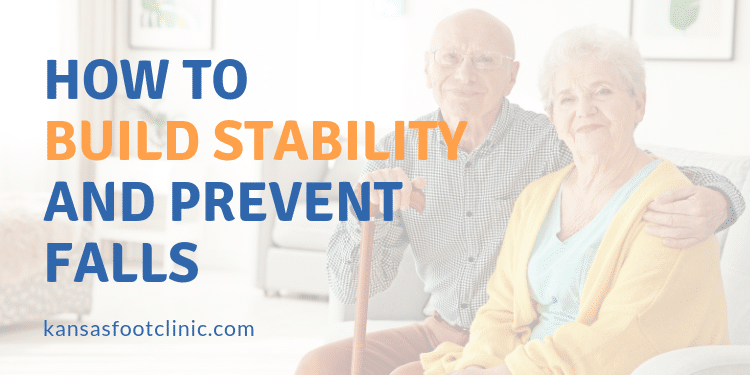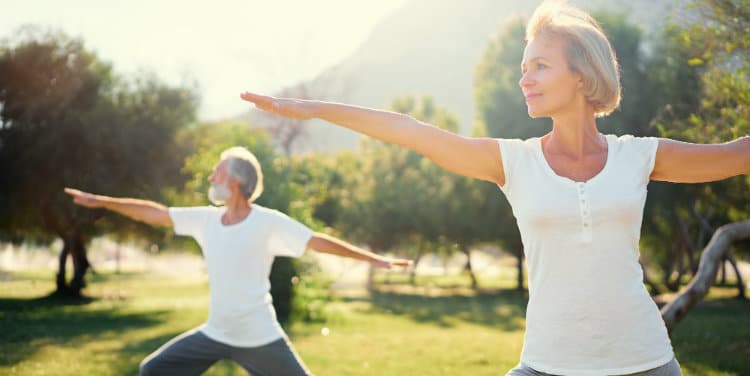Building Stability and Preventing Falls
Falling is a topic that tends to get underemphasized or glossed over in many conversations, but it is vital that we provide it the attention it deserves.
The consequences of falls have been devastating to many families. According to the Centers for Disease Control, falls are the leading cause of both fatal and nonfatal injuries to people who are 65 or older. More than 95% of hip fractures are caused by falls, and the majority of these never fully heal.
Note, however, that fall risks are not limited by age. Anyone who has a condition such as ankle instability (perhaps from a past injury) or imbalance is also at a higher risk of dangerous falls.
In addition to physical ramifications, the psychological impacts of fall risks must also be taken seriously.
The fear of falling can become a very real manifestation for someone who does not have confidence in their footing. This fear, however, can often clash with the fear of losing one’s independence. These fears can lead to an aversion toward participating in activities such as going outside, which lends toward a downward spiral of physical and mental health.
When addressing the risk of falls for a patient, the ultimate goals should always be ensuring as much mobility and independence as reasonable safety expectations can allow. The more that risks can be reduced for and around a patient, the more ability and confidence they should have to enjoy life.
If you are someone with a higher fall risk, or love and care for someone who has one, there are many ways to potentially build stability and create a safer environment.
Check Footwear
We would be remiss if we didn’t start directly with the feet and shoes.
Shoes should always be sturdy, have non-skid soles, and fit to the feet properly. Shoes with worn treads or smooth soles are an added danger and should be avoided. High heels should be entirely out of the question.
Going beyond basic shoe choices and conditions (like diabetes), footwear can and should specifically accommodate any kinds of conditions or needs someone may have. Shoes with custom orthotics that provide cushioning and support in needed areas will help with stability as well as comfort while moving. Braces might also be recommended for certain cases of instability, and shoes should properly fit with these as well.
If custom orthotics or braces are part of the equation, we are more than happy to discuss the best uses and footwear choices for them. Remember that these devices are not meant to limit how one moves, but provide added stability, comfort, and confidence to encourage moremovement.
Improve Safety at Home
Most falls happen in one’s own house. The more you can change the home environment to guard against fall risks, the better!
When inspecting a home for potential hazards, it helps to have someone with a fresh perspective along for the tour. There may be some items that will jump out to them that you would otherwise completely overlook as a longtime part of the place.
Recommended alterations include:
- Removing lower furniture like coffee tables and plant stands from high-traffic areas.
- Securing loose rugs, or removing them entirely from the premises.
- Placing non-slip mats and grab bars in the bathtub and shower.
- Installing hand rails on both sides of stairways.
- Removing boxes, stacks, and other forms of clutter from walkways.
- Making sure all electrical and phone cords are secured and not underfoot (placing them under rugs is notrecommended).
- Installing nightlights in walking areas at night (such as between the bedroom and bathroom).
- Ensuring clothes and other go-to items are within easy reach (lowering a hanger rack in the closet, for example).
- Keeping flashlights in easy-to-access places in case of outages.
Keep Moving
We can’t exaggerate the importance of remaining active. Physical activity can help maintain strength, coordination and flexibility, while simultaneously improving outlook and confidence.
Exercise does not have to be overly rigorous to be beneficial. Walking is excellent, as are activities such as yoga, water workouts, and tai chi. Exercises with a focus on balance, stability, agility, and conditioning are a plus.
While discussing fitness, diet and habits should also be considered. Smoking and excessive drinking can both decrease bone strength over time, making falls more common and damaging. A well-balanced diet is also recommended, naturally, as is receiving enough water. Dehydration is often an unnoticed sapper of strength and energy, making activities more challenging to complete.
If there are fears or concerns regarding exercising with stability or balance issues, please do not hesitate to speak with us. We can help you determine the best kind of program to start, or refer you to a physical therapist who can assist you further.
Safe, Happy, and Active
Injuries from falls should not bring misfortune to an individual and their family. Neither, however, should the fear of falling keep someone from enjoying what they love.
Community Foot Clinic of McPherson is committed to helping patients with fall risks discover the treatments and lifestyle changes that will give them peace of mind in all they do. Whether this includes orthotics, braces, or other treatments from our office or others, we want to be a part of the overall plan.
Our office in McPherson, as well as our satellite offices at Herington and Hillsboro community hospitals, are here for you. Call us at (620) 241-3313 or use our online contact form to reach out to our front desk staff.
McPherson Office
316 W. 4th Street
McPherson, KS 67460
P: (620) 241-3313
F: (620) 241-6967
© Community Foot Clinic of McPherson. All Rights Reserved.
Privacy Policy | Terms & Conditions
Web Design by CP Solutions
Marketed by VMD Services


